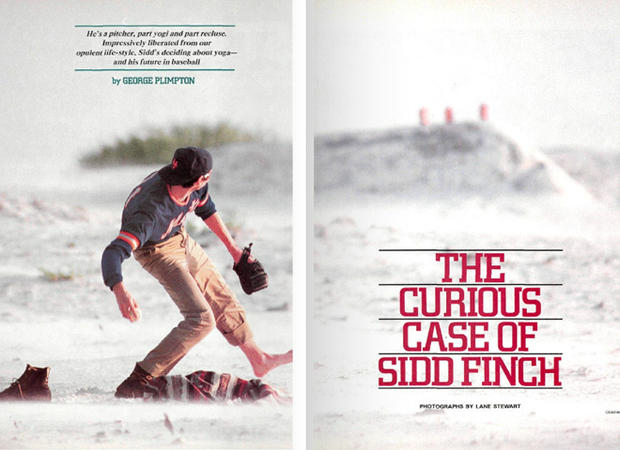Spring Training 2017: Rita and I were in Phoenix recently and caught a Royals game in Scottsdale against Colorado. The Rockies share their spring training facilities with the Arizona Diamondbacks at Salt River Fields at Talking Stick. The stadium is on Native American land developed by the Pima and Maricopa tribes who also operate a casino and resort nearby. The stadium is very nice and for the last two years has been voted the top Cactus League ballpark by readers of website Spring Training Online. The Royals/Rangers ballpark in Surprise made the final four in the bracketed vote, barely missing the final round.

The game we attended (above photo) was on March 13. The next day on the same field the Rockies lined up to celebrate Pi Day (you know, 3/14, or 3.14, the mathematical constant known as Pi or π). As drilled into my head by my Van Horn geometry teacher Mr. Cross, Pi is not an exact number and the decimals keep going after the 3.14. I can only remember it up to 3.14159, but the Rockies took it out much further as shown below. The Rockies media department admitted to a little help from Photoshop to get the right numbers.

Royals in 2017 and Beyond: The big question for the 2017 Royals is whether or not the pending free agent class can take us to one more set of playoffs. According to an ESPN analyst, the Royals have 4 of the top 20 free agents who will be in the market after this season: Hosmer (#3), Cain (#8), Moustakas (#9) and Escobar (#19). If the team had not traded Wade Davis (#7), they would have had 25% of the top twenty.
With some or all of them leaving in 2018 for big money, the Royals are in danger of the “window shutting” on the team – as shown below in a graph prepared by media website SB Nation (Sports Blog Nation). The teams on the right are projected to have a shot at contending this year, but the Royals barely make it. This is consistent with their 81-81 season in 2016. Recent over-under betting in Vegas has the Royals ranging from 76.5 to 80.5 wins. The more distressing item is being so high on the vertical axis – the open/shutting window which projects lineups for the next several years, including prospects in the minor leagues and the likelihood of keeping free agents. SB Nation does not hold out much hope for the Royals and Tigers who top out the chart. The optimum place to be is the lower right – best shot at contending in 2017 and also in the future. Dodgers, Cubs and Red Sox fans will like this chart.

The Royals pending free agents seem more than willing to stay with the team. So why not just sign all of them at their fair market value? After all, the Yankees, Cubs and Red Sox have done that for years. And more recently the Dodgers have escalated team payroll to yet another level. You know the answer. TV money. The prime example is…
The Best Team Money Can Buy: By Molly Knight (2015). On a recommendation from Leland Shurin, I read this fascinating tale of how money drives baseball and why the $2.15 billion purchase price for the Dodgers in 2012 turned out to be a bargain.
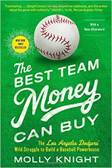
The subtitle of the book is The Los Angeles Dodgers’ Wild Struggle to Build a Baseball Powerhouse. “Wild” would certainly describe Frank McCourt who owned the Dodgers from 2004 to 2012. The O’Malley family had owned the Dodgers for over 50 years, and Walter O’Malley made two of the key moves in baseball history: he brought Jackie Robinson to the major leagues in 1947 and he relocated the Dodgers from Brooklyn to LA in 1958. In 1998, the O’Malley family sold the club to Rupert Murdoch’s Fox Entertainment Group who in turn sold it to Frank McCourt in 2004. Fox wanted out so much that they loaned a good portion of the $371 million purchase price to McCourt who put little equity in the deal.
McCourt and his wife Jamie jumped into the glamour of owning a team in LA. Jamie became CEO. They bought many homes and lived the high life, but the big loans for the team were not getting paid down fast enough. McCourt’s ace in the hole was that the team’s TV rights would be coming up for renewal and would bail him out of any problems. But not soon enough. Frank and Jamie grew to dislike each other, and Jamie filed for divorce in 2009. The team ended up in bankruptcy for reorganization. After nasty litigation that is believed to be the costliest divorce in California history, Jamie settled for $131 million for her half interest in the Dodgers. A few months after that, under pressure from Commissioner Bud Selig, Frank sold the Dodgers at auction. He got $2.15 billion, quite a nice profit for Frank. Jamie was not happy, calculating that she came out about $900 million short for her share. It did not help that Frank was very publicly displaying new eye candy (another woman) at sporting events. Jamie sued to set aside her settlement, but the appeals court said no.
[Baseball Owner Divorce Trivia – The McCourt divorce has at least one predecessor in baseball history. Bill Veeck met the same fate with his Cleveland Indians after the team won the World Series in 1948. The Indians did not repeat in 1949, but the team still had good value and Veeck needed cash to fund his divorce settlement. After selling the Indians, he later owned the St. Louis Browns and Chicago White Sox.]
The New Owners – Receiving Big Dollars from TV: Jamie McCourt was not the only one surprised by the purchase price for the team. The prior top price for a pro franchise had been $1.1 billion for the NFL Miami Dolphins in 2009. Forbes magazine had estimated the Dodgers value at $900 million. The new owners, a group assembled by Guggenheim Partners (including Magic Johnson), shared Frank McCourt’s view that a new TV deal would close any gap. And it did, big time. In 2013, the Dodgers signed a 25-year deal with Time Warner for $8.3 billion. [The TV deal has not worked out well for TW. Other cable carriers objected to the TW rates and refused to carry the games. In 2016, the last year for announcer Vin Scully, 60% of the LA cable market did not get the games.]
The New Owners – Paying Big Dollars to Players: Time Warner paid too much, but the Dodgers are not giving it back – they are spending it on players. When the new owners bought the team on May 1, 2012, the payroll for that season was already set at $105 million. The owners quickly made up for that by doubling the payroll for 2013. Molly Knight’s book covers the 2013 and 2014 seasons, and she focuses on two players to show how the Dodgers are escalating salaries to build a baseball powerhouse. Clayton Kershaw signed a 7-year deal for $215 million, the richest ever for a pitcher. Rookie phenom Yasiel Puig was signed as a free agent out of Cuba for $42 million in another 7-year deal. Kershaw won the Cy Young in 2013 and 2014, and Puig was a hitting and fielding sensation. But…
Puig was a distraction with his tardiness and entourage. Other teams found him arrogant. The clever title to the Puig chapter in Knight’s book is “Puigatory.” Kershaw was great in the regular season, but he faltered in the NLCS in 2013 and the NLDS in 2014, each time losing two games. The question of team chemistry was raised, as it always is when payroll is high and the team loses in the postseason. The Dodgers last won a World Series in 1988. The Giants have a payroll of about $100 million less than the Dodgers, but won the World Series in 2010, 2012 and 2014, arguably because of a better clubhouse culture.
[Update after Knight’s book: The Dodgers bumped their payroll in 2015 to $271 million, easily the highest in the major leagues. Kershaw pitched well in the 2015 NLDS, but the Dodgers lost to the Mets who went on to play the Royals in the World Series. In 2016, Kershaw lost the final game in the NLCS to the Cubs who went on to win the World Series. Puig was plagued by injuries in 2015 and 2016 and was not a factor.]
Old News: Smaller market teams have long complained about the disparity in TV revenues. The Yankees were often the nemesis, but the Dodgers also have a history of resistance. In 1951, Cardinals owner Fred Saigh was trying to level the playing field by asking for a visiting team’s cut in TV revenues. This was labeled socialistic by Dodger owner Walter O’Malley, and this was years before O’Malley moved the Dodgers to LA. Within two years, Saigh sold the team to deep-pocket Anheuser-Busch.
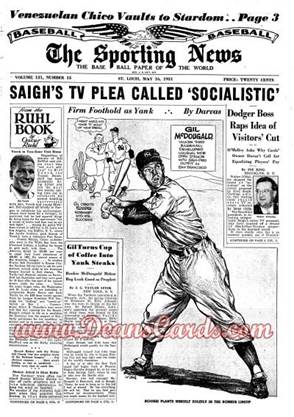
How About Those Royals: So how about Kansas City? It is one of the smallest TV markets in the major leagues. The fans are very loyal – the Royals have the highest percentage of people watching in their market, but the total numbers are still far below the big population markets. This is why the 2016 TV revenues looked like this:
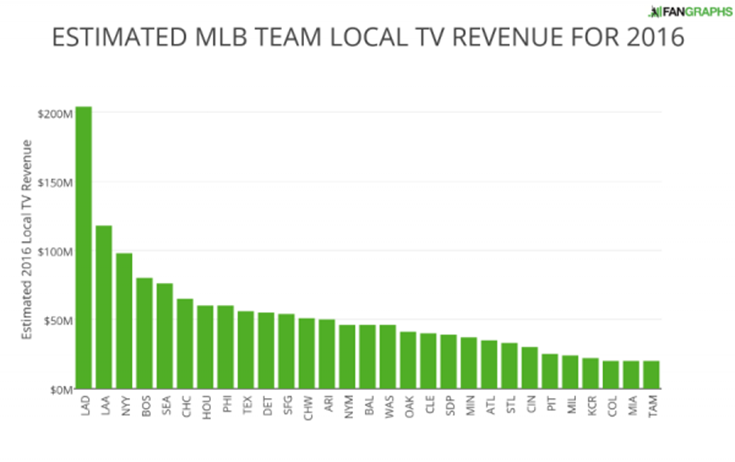
The number for LA may be an outlier and has proven to be a loss for Time Warner. But even taking that out, the Royals are still sitting at about $22 million a year (fourth lowest), while the Angels (118), Yankees (98), Red Sox (80) and Cubs (65) operate in a much different universe. Within the Royals division, it goes like this: Detroit (55), White Sox (51), Cleveland (40) and Twins (37). Notwithstanding the TV revenue numbers, the Royals have been maintaining a payroll that is in the middle of the pack. Does this mean that owner David Glass made a bad investment? Not at all.
Royals Team Value: In 2000, David Glass bought the Royals for $96 million. This past year, Forbes Magazine valued the Royals at $865 million. WHAT?
Television may provide unequal returns, but the rising tide in this case lifts all boats. Almost all professional sports teams have gone up substantially in value the last several years. The TV contracts have escalated because sports is one of the few things watched live – meaning that viewers don’t fast-forward through the commercials. Time Warner may have overpaid in LA, but other teams are getting large increases as they renew. The Cardinals, playing in a relatively small market, signed a 15-year deal in 2015 for about $1 billion. The Royals expect to get a large bump when their current contract expires in 2019.
There are some balancing factors among the teams. Those with large payrolls pay a luxury tax for going over a cap, and that money is redistributed to the lower payroll teams who are expected to use it to build stronger franchises. Some do, some don’t. Revenue sharing applies to any national TV contracts and a portion of the regional contracts. Another big factor is MLBAM (Major League Baseball Advanced Media), which Forbes Magazine calls “The Biggest Media Company You’ve Never Heard Of.”
MLBAM is an internet company that has become the dominant provider of streaming content services. The company also includes Statcast, the MLB channel, ticket sales and a very successful app. Much of its profit comes from non-baseball activities in deals with other pro leagues and companies such as Disney. The MLB stake is worth billions of dollars – and here’s the really good part: the profits are shared equally by the 30 teams. While the big market teams will always retain some money edge with their regional TV deals, the small market teams are now reaping cash from revenues never dreamed of by Bill Veeck and Ewing Kauffman.
The media reach of MLB is reflected in the team values as estimated by Forbes, ranging from $650 million (Tampa) to $3.4 billion (Yankees). It has been nice timing for David Glass and the other owners, but give them credit for providing the seed capital to set up MLBAM and put them ahead of other sports in media technology.
So maybe someday the Royals will have some big bucks for free agents. Stay tuned.
Sidd Finch Revisited: I reported my favorite spring training story last year, and it is timely today to remind you of this timeless story. Excerpted from Hot Stove #12:
From: Lonnie Shalton
Sent: Friday, April 01, 2016 8:24 AM
To: Lonnie Shalton
Subject: Hot Stove #12 – The Curious Case of Sidd Finch
St. Petersburg – 1985: After the Yankees ended their spring training tenure in St. Petersburg in 1961, the Mets took their place and shared Al Lang Stadium with the Cardinals. In spring training of 1985, the Cardinals showcased a star-studded team that then lived up to its promise by going on to win the National League pennant. Willie McGee was MVP, Vince Coleman was Rookie of the Year and stole 110 bases, Ozzie was Ozzie and Tudor, Andujar and Cox were great on the mound. The Cards then lost the I-70 World Series to the Kansas City Royals. I am confident that the Cardinal fans among the Hot Stove readers are spitting the name “Denkinger” as they read this. I had the good fortune to attend all seven games – a highlight of my personal baseball history.
The Mets were good too, but ended up three games behind the Cards in the NL East. In spring training though, the Mets could easily claim the biggest story in all of Florida – the arrival of pitching phenom Sidd Finch. Most of the media hype on Finch came after well-known sportswriter George Plimpton wrote a long feature in Sports Illustrated about the Finch tryout in St. Petersburg. In those days before digital media, I was a loyal reader of the magazine and still remember Plimpton’s article. Finch was 28 and had never played professional baseball. A Mets minor league manager had seen Finch throw and urged the Mets to give him a tryout. Finch was sort a recluse and not sure if he wanted to play professional baseball. Royals fans will remember that Zach Greinke had similar anxieties and left Royals spring training in 2006, missed the season and almost quit baseball.
Finch had a gifted arm that greatly impressed the Mets and so they were willing to work with his eccentricities. Finch desired privacy and so worked out at a remote area and did not stay in the team hotel. He had workouts with three of the Mets, including Lenny Dykstra, and he got pointers from pitching coach Mel Stottlemyre. The big thing was the Finch fastball that had numbers on the radar gun that made the Mets salivate. He was Nolan Ryan plus. And he had great control. The mostly private workouts were also attended by Mets owner Nelson Doubleday and GM Frank Cashen. They liked what they saw.
To keep their deal with Finch, the Mets were reluctant to talk about him until he made a decision to play. Plimpton proved resourceful in getting background material. Finch had been enrolled for a short time at Harvard, and Plimpton was able to talk to his roommate who confirmed the Zen-like nature of Finch who had studied in Tibet. Although the Mets had tried to impress Finch by assigning him a cubicle between stars George Foster and Daryl Strawberry, Finch kept away from the clubhouse and spent most of his non-baseball time at his boarding house (as his landlady confirmed to Plimpton, saying Finch practiced on his French horn at night).
After Plimpton’s article came out, Mets fans screamed for more on Finch. The New York papers complained about Plimpton getting the scoop in Sports Illustrated. The Mets finally agreed to a press conference in St. Petersburg. The then-three major networks attended, as well as some reporters. Finch was there with a prepared statement, but it was read on his behalf by someone else. The statement announced that Finch was retiring and would not be playing baseball. One can only speculate if Finch would have made the difference for the Mets in their close division race with the Cards. And then have been the opponent for the Royals in the 1985 Series.
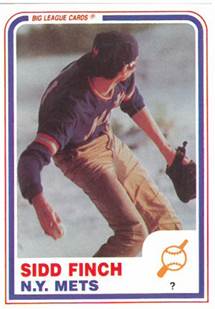
Where is Sidd Finch Today? Many questions were raised after Sidd’s retirement, and a very good answer came when readers were told in a later Sports Illustrated issue to take a closer look at the date on the cover of the Finch issue. It was April 1. Just like the date of this email.
Plimpton and Sports Illustrated had pulled off one of the best April Fool’s Jokes of all time. Plimpton had recruited a small team of folks who all did a good job of keeping it quiet. Only a few Mets were involved. Plimpton had a junior high school art teacher pose as Finch for the photos taken by the Sports Illustrated photographer. The prank is well documented in an ESPN “30 for 30” short (click here, 22.5 minutes). The ESPN piece includes interviews with Plimpton, Stottlemyre, Finch (the school teacher), photographer Lane Stewart, NY Times sportswriter George Vecsey and the magazine’s publishing staff.
There was a hint in the subtitle of the article (see photo below): “He’s a pitcher, part yogi and part recluse. Impressively liberated from our opulent life-style. Sidd’s deciding about yoga – and his future in baseball.” When you take the first letter of each word of this subtitle, it spells “Happy April Fool’s Day – a(h) fib.”
